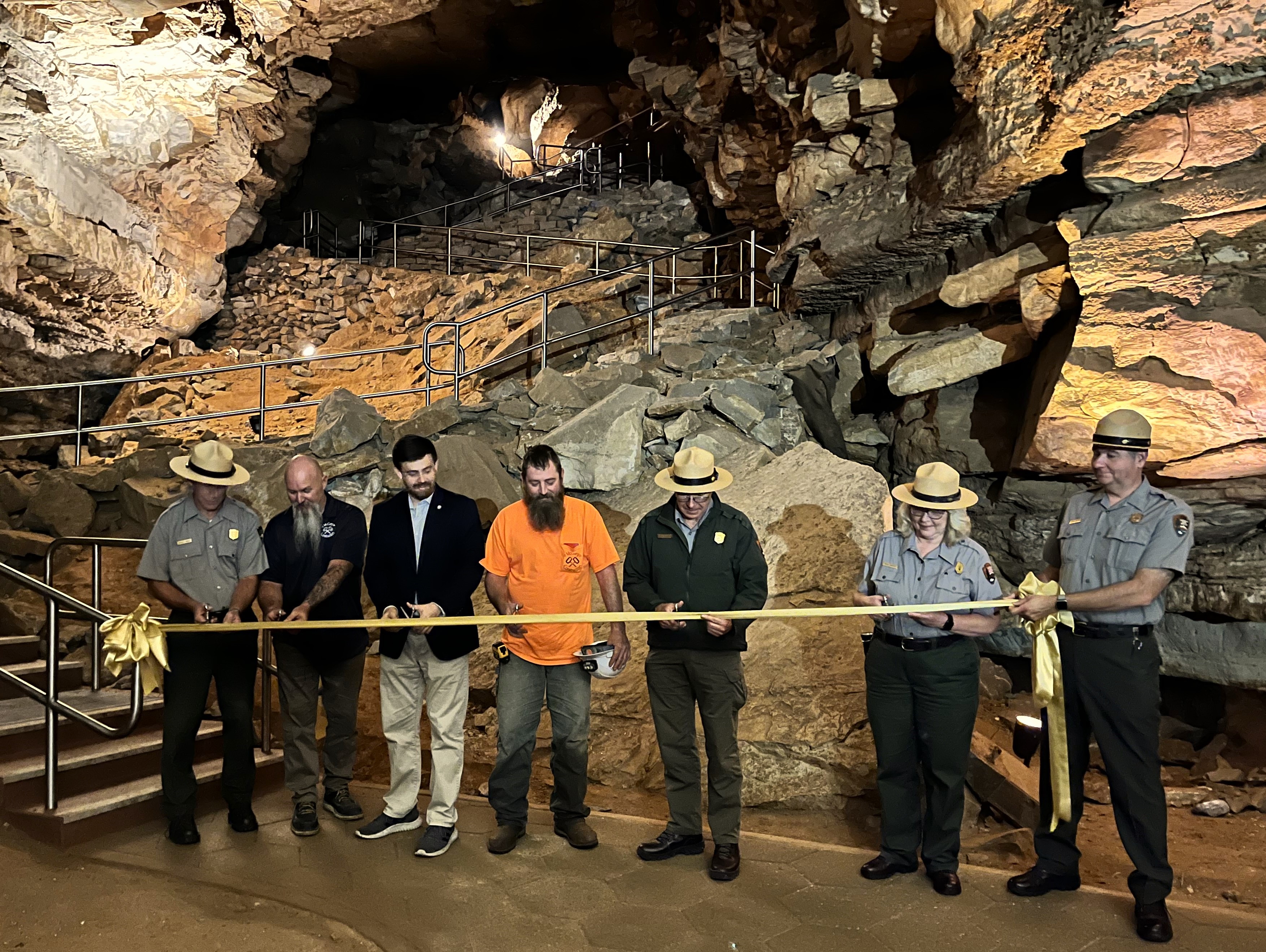News Release

NPS Photo
|
Subscribe
|
Contact: Molly Schroer, 270-758-2192
Mammoth Cave National Park officials and invited guests gathered inside Mammoth Cave today to mark the completion of a one-year project to rehabilitate approximately one mile of cave trail. The project was funded through the Great American Outdoors Act (GAOA) and has made significant improvements to cave infrastructure for visitor safety, tour experience, and natural and cultural resource protection inside Mammoth Cave.
“Today we were able to celebrate the great improvements that have been made to the Domes and Dripstones tour route with our park partners and community leaders,” said Superintendent Barclay Trimble. “We are proud of the hours of hard work that went in into rehabilitating the cave trail. This project will provide a safe and quality visitor experience for hundreds of thousands of people who come to Mammoth Cave for an underground adventure.”
After short remarks from Superintendent Trimble and construction project leader Bryan McGary of McGary Construction, a golden ribbon was cut marking the opening of the trail. Event guests toured the newly rehabilitated cave trail and learned about the cave’s history from Mammoth Cave Interpretive Supervisor Johnny Merideth, and the long and difficult process it took to harden the trail’s surface, install curbing and new handrails, and upgrade several sets of stairs from the project from McGary.
McGary explained that construction teams carried a total of around 1.5 mil pounds of materials into the cave for the trail project. This included approximately 100,000 pounds of stainless steel and 1 million pounds of dry concrete that was carried in five-gallon buckets by hand, manual carts, and track systems specially built to transport the material for sometimes up to one mile along the passageways. The construction teams also had to remove tens of thousands of pounds of handrails, concrete, and KyRock asphalt from the cave for disposal.
“Imagine carrying nearly your own body weight throughout the cave and doing that twenty times a day,” said Bryan McGary of McGary Construction. “This will give you a little taste of what it was like to haul the material in and out, because no trip was done empty-handed. Everything that is carried into the cave had a residual waste that must be carried out of the cave.”
Once the construction team removed the dry concrete inside the cave, it was mixed in special containment tents with water that was pumped and carried in. This process kept the concrete powder from becoming airborne, sticking onto the cave walls, and contaminating the cave environment. The trail work was not only labor intensive but required the construction team to work underground in a dark and damp environment for almost 12 months.
In addition to the trail improvements, two gathering areas for tour groups were improved with new benches installed at Fairy Ceiling. Major changes were made to the overlook of Crystal Lake, a small natural pond formed by a floatstone embankment in the Frozen Niagara section. The lake area was toured in the 1920s but was not clearly visible from the modern cave trail. The trail improvement project replaced the existing concrete walkway with a see through metal grate and extended the viewpoint further over the lake so visitors can now look down on water and piece of cave history.
Public cave tours through the Domes and Dripstones tour route will resume in early October. Cave guides have been actively training in the new section of cave over the last several weeks to reacquaint themselves with the tour route, geology, and history in this section of the cave. Several areas along the trail have changed since the renovations, and many of the newer cave guides have never even walked through this section of cave before.
Learn more information about the Cave Trail Rehabilitation Project and view photos from the construction our Park Projects website.
Last updated: September 28, 2023
